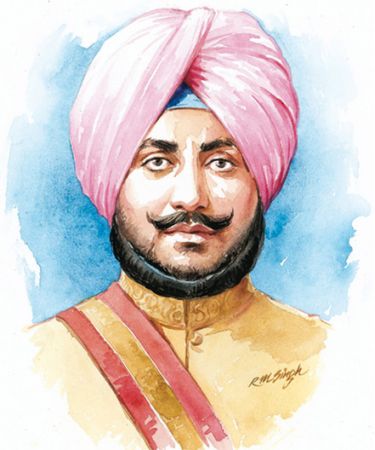IT was a nice party and we were all enjoying ourselves to celebrate the success of a friend. My friend introduced me to some young foreigners as “Osama’s brother”.
The two couples were from South Africa, globe-trotters and well exposed to international travel and traditions. London figured in our conversation, too. For me it’s the place I visited first when I ventured away from the Indian shores. These couples had found work there, in the recession, mind you, which had a lot to say about their abilities.
“We see these greetings and I wish someone would explain them to us,” said a young lady.
“Which greetings,” I asked.

“You know, the way Muslim men embrace each other, or place their hand on their heart when they meet. What does it really mean?”
Here was I, resplendent in a black overcoat, wearing a nice tie and all, as well as a colour-coordinated turban, and they had decided that I was someone they could query about “Muslim” greetings. I wore a turban, as did their host, also a Sikh, yet somehow; they had made an intuitive (and wrong) leap about my religious denomination.
My mind went back to the time when we found it impossible to tell foreigners apart, unless the differences were very obvious, like skin colours, basic body structures, etc. “A gora is a gora, they all look alike,” is a refrain all too common.
I took the confusion sportingly and proceeded to explain with more confidence than authority the differences in greetings, and also gently pointed out that they had more to do with culture than religion.
The idea that my turban had made me, in some sense, a target somehow niggled in my mind. Well, I had been there before and it wasn’t all that bad! Joel Baird was friendly towards me from the first time we met in New York.
“You are a Sikh. When I was a child, I was told that if I was in a bind, I should find a Sikh and run to him. He would help me,” said this Columbia University student. Now Joel had studied in the American School, New Delhi, and had spent time in India. He and his charming wife were great hosts, and the New York memory brings a smile on my face, whenever it surfaces.
As does another one, of meeting an elderly person at a gas station while travelling on an American highway in the wee hours of the morning. “Sikhs are good people,” he pronounced after seeing my turban. He had based his observation on his interaction with Sikhs while serving in the US Army.
However, 9/11 changed all that and turbans started being associated in many minds with Osama bin Laden. The finer distinctions of kinds and colours of turbans were lost and even someone like Hardeep Puri, Permanent Representative of India to the United Nations, recently faced undue attention from US airport security personnel because of his turban. So embarrassing, unfortunate and sad. Generalisations can be treacherously misleading, especially sweeping, negative ones. They can even cast a pall over an apparel of honour.
This “Middle” by Roopinder Singh was published on the Editorial Page of The Tribune on December 29, 2010.
You may also like to visit the following links to the articles I have written about wearing turbans. Please don’t miss the brilliant water-colour paintings illustrating representative styles of turbans made by the artist R M Singh in 2004.
